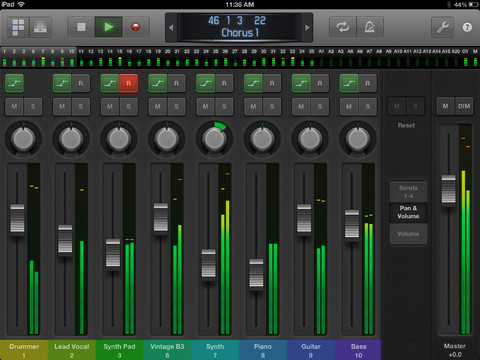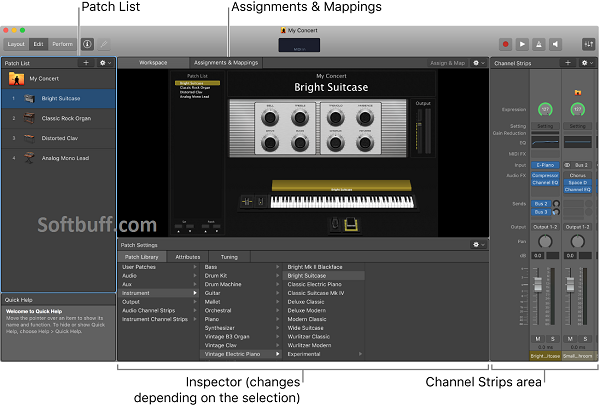
That’s one of the aspects of what we’re doing, and it’s happening in real time. So I can do external processing on different sources, depending on what song it is. Say on another song I need Trent’s vocal, he can send that to me.


And then from the monitor desk, can route on a song-by-song basis-he has his own matrix, so he can send out, for example on one song, I need to get a track from playback, he can get that to me. We were fortunate enough to have the time to try everything out and see what worked for us, and that’s how we ended up with MainStage.īasically, our monitor console is the center section of everything, as far as audio, so everything hits the monitor desk. We did three months of production rehearsals where the band was learning songs and we were sorting through all the technology out there, figuring out what we wanted to use and how it would work in our scenario. Were you doing programming during production rehearsals? If you’re familiar with any workstation, it is smooth transition. It was easy to-short of any training or even looking through the manuals-just open the package and start working it just felt comfortable. When we first started production, we were looking at a few different products that all claimed to have the same or similar features, and the first thing that drew me to MainStage would have to be the familiarity-it instantly felt comfortable.

Yes, this is the first time that I’ve had a chance to use MainStage. Is this the first time you’ve used this program? He also helped Reznor create the first iteration of his vocal effects rig, which was basically ribbon controllers built into the mic stands so that the performer could do X/Y control of two different parameters of whatever effects were called for on a song-by-song basis. Mitchell first started working with the band in frontman Trent Reznor’s New Orleans studio, and then was brought onboard for their last tour, With Teeth, where he primarily did programming for Twiggy or Jordy White and taking care of their guitars and bass.
#Apple mainstage live looping software
I got a chance to talk to Apple MainStage tech Mat Mitchell about using the new Apple system part of Logic Studio, which allows engineers and performing musicians to use software instruments and effects through a full-screen interface. I also tried to get Mobius working in mainstage but I intalled the program and its plug-in (it appears as a component in the respective plug-in directory) and I cannot find it in mainstage channel strip.In the November 2008 issue, we profile the current Nine Inch Nails tour from the front-of-house and monitor engineers’ perspectives. I cannot call an aple-mainstage support number because I live in Colombia, South America and and there are no people here trained in mainstage troubleshooting, but you can call them and let me know if they fix your issue without doing the steps I told you to do so.this should be the number
#Apple mainstage live looping Patch
I would like to have my loopback modules sync with the mainstage clock, and also to go back to a set or patch an trigger automatically the loops already recorded on that gig, but I can compromise those meanwhile to get the loopback working. Although it was no the perfect solution I think it can help me for now, let me know if it fix your problem too. This options are located in the right side pop-up menu of the module. Just check do nothing when patch or set are selected and also check do nothing on mainstage clock start.

Yesterday I found a way to fix the loopback bug.


 0 kommentar(er)
0 kommentar(er)
